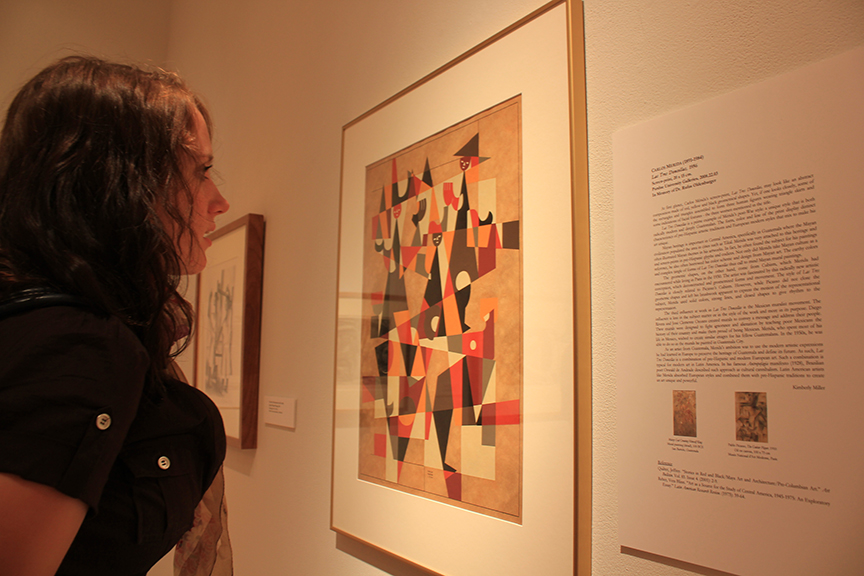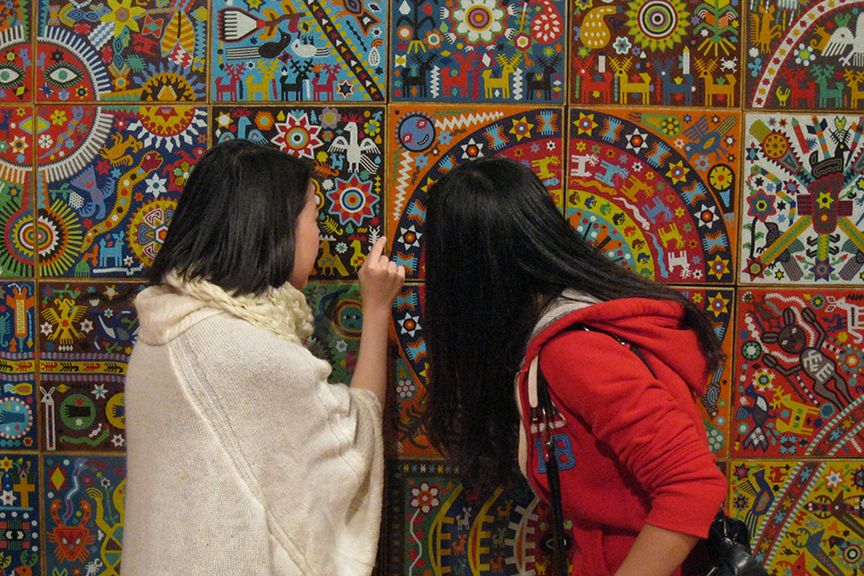
Undergraduate Program
The goal of the art history program at Purdue University is to give students a broad, well-rounded training in this discipline, through some 20 different courses offered at regular intervals and including classes in western and non-western art. Our courses cover all major historical periods within the mainstream of the western tradition from antiquity to the modern era, in addition to classes dealing with Islamic art and Latin American art. The history of photography and design history are other electives that can be taken. Al of our students learn to think critically and do research on art-historical topics besides improving their writing skills. Majors are required to take either of two courses that respectively stress theories of art to the modern day, and art museum practices, that is, how museums form collections, operate, and serve an important social function. Several of our classes contribute to interdisciplinary programs in Classical Studies, Medieval and Renaissance Studies, Latin American Studies, Women’s Studies, and Italian Studies. It is strongly recommended that the major in art history be accompanied by a minor in a field complementing the major. Possible minors are integrated studio arts or design, political and social history, classical studies, literature, philosophy, anthropology, or a foreign language. It also is important to gain a reading knowledge of French and/or German by the senior year, because of these languages’ value in the study of art history at the graduate level.
Did you know that the Department of Art and Design offers a Minor in Art History?
The minor consists of 15 credit hours, with the two basic survey courses of western art required, and with the remaining 9 hours chosen from the categories of ancient and medieval art, renaissance and baroque art, and art of the modern era.
Career Opportunities
Students with an undergraduate degree in art history are prepared for a future career in teaching, in the museum world, in art dealing, or in art journalism (among other opportunities). We inform students about the many different graduate programs available at other institutions (at present Purdue offers only a B.A. in art history), and we help them meet the entrance requirements for this next phase of their academic careers. We also encourage them to seek internships in local museums, and to work as monitors in the Purdue galleries. Some of this information is diffused through the active Art History Student Organization (AHSO) at Purdue, which supplements and enriches classroom experience.
Museum Internships and Volunteering Opportunities
Students considering applying for a museum internship are strongly encouraged to watch this video.
Potential internship/volunteering possibilities include:
- Patti and Rusty Rueff Galleries (being a gallery monitor)
- Art Museum of Greater Lafayette
- Haan Mansion Museum (Lafayette, IN)
- Indianapolis Museum of Art
- Indianapolis Museum of Contemporary Art
- Eiteljorg Museum of American Indians and Western Art (Indianapolis, IN)
- Art Institute of Chicago
- Museum of Contemporary Art Chicago
- National Mexican Museum of Art Chicago
- Metropolitan Museum of Art (New York City, NY)
Graduate School
A few suggestions for those who wish to apply to Graduate School:
- Enhance you prospects for admission by earning good grades (a strong G.P.A. is essential); minoring or double-majoring in a related field; becoming proficient in a second language (M.A. programs usually require reading skills in one or two foreign languages, usually French, Italian, or German); having a study abroad experience; interning in a museum or gallery or participating in an archaeological dig; visiting museums and seeing important temporary exhibitions; and finally by reading novels and books about art, history, philosophy, etc. to acquire a broad general culture.
- Talk to your professors and advisor about your academic and professional goals. Not only can they provide advice, but you will also need three letters of reference. To write a stronger letter, your professor would have to know you well and over an extended period of time.
- Research graduate schools, their plans of study and course offerings, and look for individual faculty members whose research and work match your interests. If possible visit the universities and make appointments to meet the faculty. For detailed information on the different graduate programs, see the Graduate Programs in Art History: The CAA Directory, which covers 650 graduate programs in six countries for History of Art and Architecture, Arts Administration, Curatorial and Museum Studies, and Library Science. It provides information such as Curricula; Class size; Faculty and specializations; Degree requirements; Library and studio facilities; Opportunities for fellowships, assistantships, and financial aid; Availability of health insurance, etc. The directory is available at the Visual Resources Center (PAO 3121F).
- Plan your writing sample early and discuss it with your professors. The writing sample should showcase your research, writing, and analytical skills. Ideally, it would reflect your research interest.
- Get help from the Liberal Arts Career Development (LACD) to navigate through the complex and lengthy application process.
A Recent Graduate’s Statement
Sydney Gobin, class of 2013, speaks about her experience in the art history program at Purdue.

